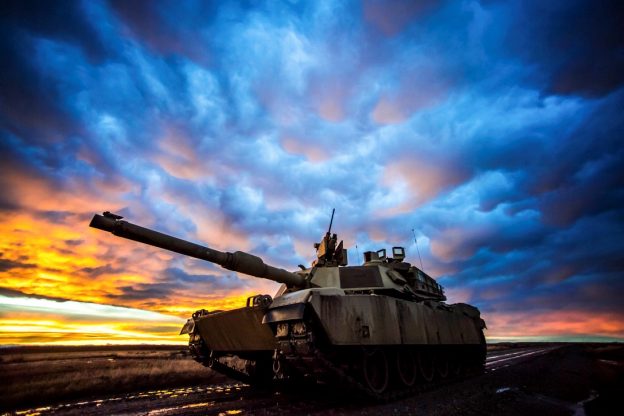China’s defense budget will increase by 7.5% in the coming year. Russia’s Vladimir Putin is moving rapidly ahead to dramatically strengthen his nation’s nuclear arsenal. The U.S. continues to seek to recover from the eight years of diminished budgets during the Obama years, as President Trump seeks a 4.7% increase from last year’s spending level.
The decline of America’s military hard power, historically shown to be critical to defending against major military powers and to sustain operations over time against lesser powers or in multiple instances simultaneously, has been documented and quantified in by the Heritage Foundation’s Dakota Wood. Over the next three days, the New York Analysis of Policy and Government will provide the key, and truly worrisome, excerpts from Heritage’s study.
[It is] difficult to quantify the growing threats to the U.S. and its allies that are engendered by the perception of American weakness abroad and doubts about America’s resolve to act when its interests are threatened. The anecdotal evidence is consistent with direct conversations between Heritage scholars and high-level diplomatic and military officials from countries around the world: The perception of American weakness is destabilizing many parts of the world and prompting old friends to question their reliance on America’s assurances. For decades, the perception of American strength and resolve has served as a deterrent to adventurous bad actors and tyrannical dictators. Regrettably, both that perception and, as a consequence, its deterrent effect are eroding. The result is an increasingly dangerous world threatening a significantly weaker America
The United States needs a military force of sufficient size, or what is known in the Pentagon as capacity. The many factors involved make determining how big the military should be a complex exercise, but successive Administrations, Congresses, and Department of Defense staffs have managed to arrive at a surprisingly consistent force-sizing rationale: an ability to handle two major wars or major regional contingencies (MRCs) simultaneously or in closely overlapping time frames.
At the core of this requirement is the conviction that the United States should be able to engage and decisively defeat one major opponent and simultaneously have the wherewithal to do the same with another to preclude opportunistic exploitation by any competitor. Since World War II, the U.S. has found itself involved in a major “hot” war every 15–20 years while simultaneously maintaining substantial combat forces in Europe and several other regions. The size of the total force roughly approximated the two-MRC model, which has the inherent ability to meet multiple security obligations to which the U.S. has committed while also modernizing, training, educating, and maintaining the force. Accordingly, our assessment of the adequacy of today’s U.S. military is based on the ability of America’s armed forces to engage and defeat two major competitors at roughly the same time.
This Index’s benchmark for a two-MRC force is derived from a review of the forces used for each major war that the U.S. has undertaken since World War II and the major defense studies completed by the federal government over the past 30 years. We concluded that a standing (Active Duty component) two MRC–capable Joint Force would consist of:
- Army: 50 brigade combat teams (BCTs.) [Currently, there are only 31, and only 15 are combat-ready.]
- Navy: 400 battle force ships and 624 strike aircraft. [Currently, there only 284 ships.]
- Air Force: 1,200 fighter/ground-attack aircraft. [Currently, there are only 924.]
- Marine Corps: 36 battalions. [Currently, there are only 24.]
This recommended force does not account for homeland defense missions that would accompany a period of major conflict and are generally handled by Reserve and National Guard forces. Nor does it constitute the totality of the Joint Force, which includes the array of supporting and combat-enabling functions essential to the conduct of any military operation: logistics; transportation (land, sea, and air); health services; communications and data handling; and force generation (recruiting, training, and education), to name only a few. Rather, these are combat forces that are the most recognizable elements of America’s hard power but that also can be viewed as surrogate measures for the size and capability of the larger Joint Force.
The Report Continues Tomorrow.
Photo: U.S. Department of Defense
